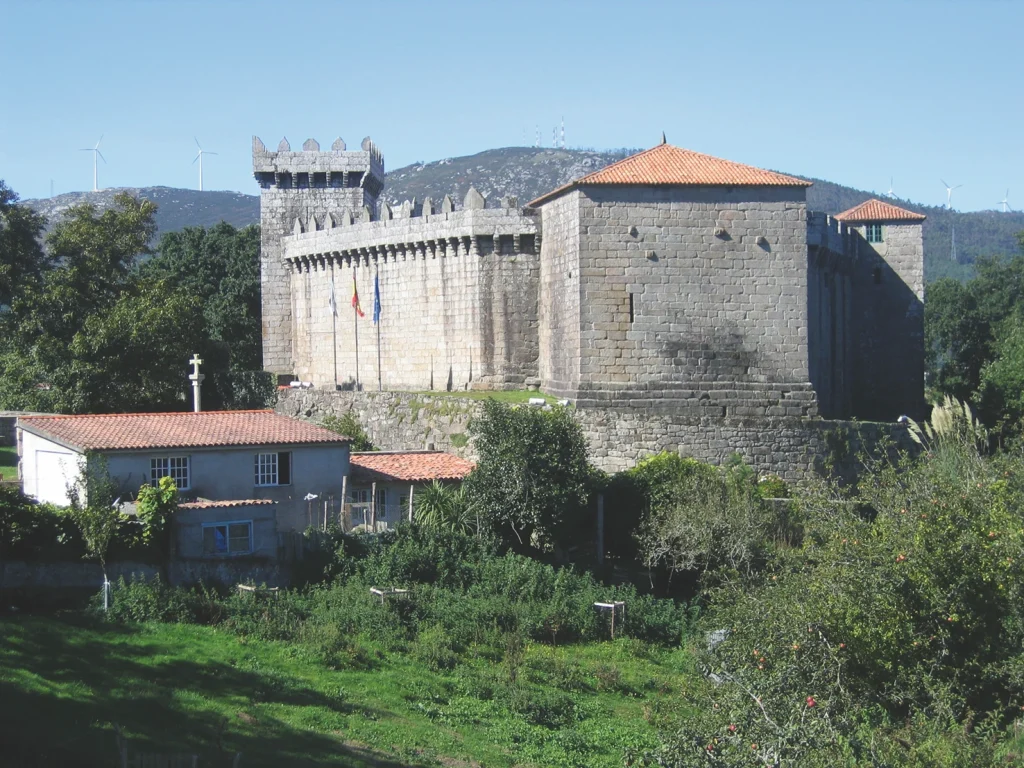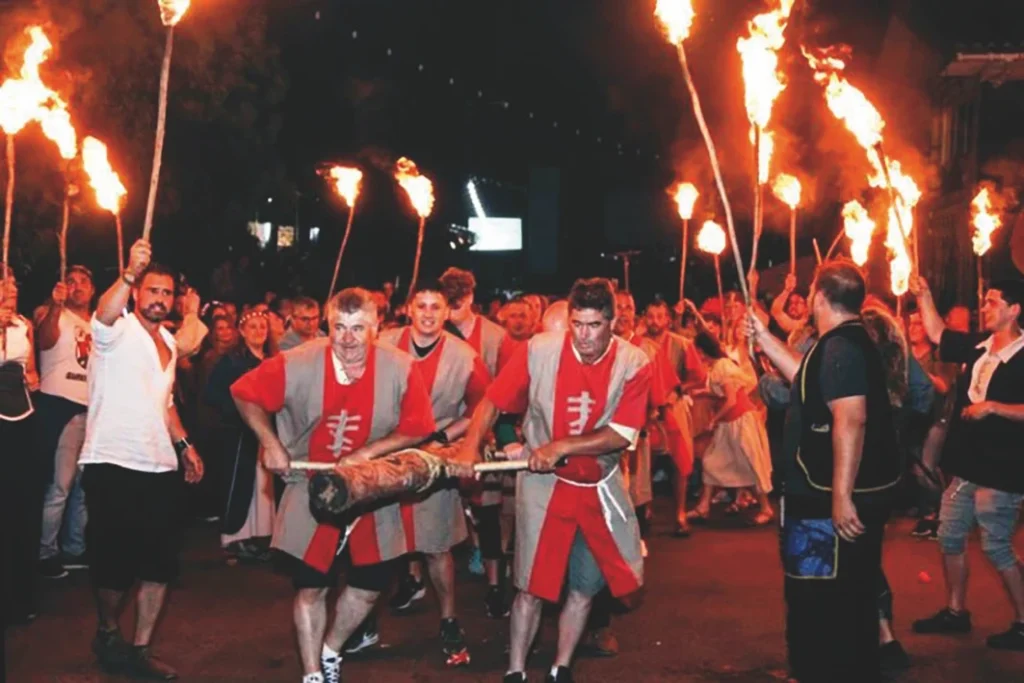
This fortress was the seat of government for the sizeable jurisdictional region of Vimianzo, made up of 36 parishes and three towns: Vimianzo, Camariñas and Laxe. What is now the town of Vimianzo gradually grew around the castle. The town centre is at a crossroads that was later converted into the AC-552 motorway to Fisterra and the AC-432 to Camariñas and extends in the opposite direction to Serramo. The first lords of the castle were the Mariños de Lobeira, who fell into disgrace after accumulating debts with the king. In the early 15th c., ownership of the castle changed from the Mariños to the Moscoso family, who now controlled the region.
The old castle was destroyed during the revolt of the Irmandiños in 1467 and shortly after the archbishop of Santiago Alonso II de Fonseca ordered it to be rebuilt during a bitter struggle between him and the Moscosos for economic control of Santiago and Costa da Morte. The conflict reached the point where the prelate was kidnapped by Bernal Eáns de Moscoso and held captive in this castle and others in the region.
Shortly after being rebuilt, it was taken by force by Lopo Sánchez de Moscoso, 1st count of Altamira, and remained in the hands the family until 1872, when it was bought by Ramón Martelo Núñez, a landowner of the house of O Pombal, in Boaño (Traba de Laxe), who had family ties to the Moscosos. It was then inherited by his son, Evaristo Martelo Paumán del Nero, poet, who adapted it as a seasonal residence. From then on, the castle was known as the Torres de Martelo.

Months before the Civil War, the municipal corporation of Vimianzo attempted to expropriate the castle for use by the local government and other municipal services. This had drastic consequences for the people who had encouraged the move after the military rebellion of 1936. The Provincial Government of A Coruña purchased the castle in 1973, and had it restored for use by the municipality of Vimianzo. There is a museum inside with panels that explain the history of the castle and Costa da Morte. There is also a live show of local crafts: lace work of Camariñas, pottery of Buño, basket weaving, straw hat making, glass, linen, etc. The Fiesta of the Assault of the Castle is held in the first month of July, which is a historical recreation of the revolt of the Irmandiños, which brings together thousands of people in the town.

The castle itself stands on a hill that dominates the central area of the valley of Vimianzo and is surrounded by a ditch. The layout is polygonal with four towers, one on each corner arranged according to the cardinal points. The gate to the castle courtyard is in the south wall and there you can see the two original coats of arms showing the wolf’s head of the Moscosos and the roundles of the Castros, all the others are later additions. The keep is the only tower to have crenellations and battlements, the other three are covered with hipped roofs, although in the past their design would have been defensive in nature.
Some stairs close to the east wall in the interior courtyard take you up to the chemin de ronde or walkway from where you can see some splendid views of the valley and the town itself.
The architecture of the castle is clearly of the the late Gothic style: examples include the pointed arch in the entrance gate, the windows in the keep and a loophole window ending in an ogee arch.
Vimianzo is the Galician municipality with the largest number of dolmens, some of which have been considerably damaged and others that have been perfectly conserved. The town of Vimianzo would be an ideal starting point for a route to discover them. The municipal website (https://vimianzo.gal/turismo/) offers information to guide visitors.
From Vimianzo continue on the AC-552 to Berdoias and from there head towards Muxía. Along the way take the opportunity to stop off at San Martiño de Ozón to see an interesting monument: the church, which still has two Romanesque apses with some interesting figures on the corbels; the rector’s house, to the south of the church, where some remains of the old monastery can still be seen; and the huge hórreo that measures approximately 27 metres in length, making it one of the longest in Galicia.
From here you can return to Muxía, where you started this second tour of Costa da Morte.